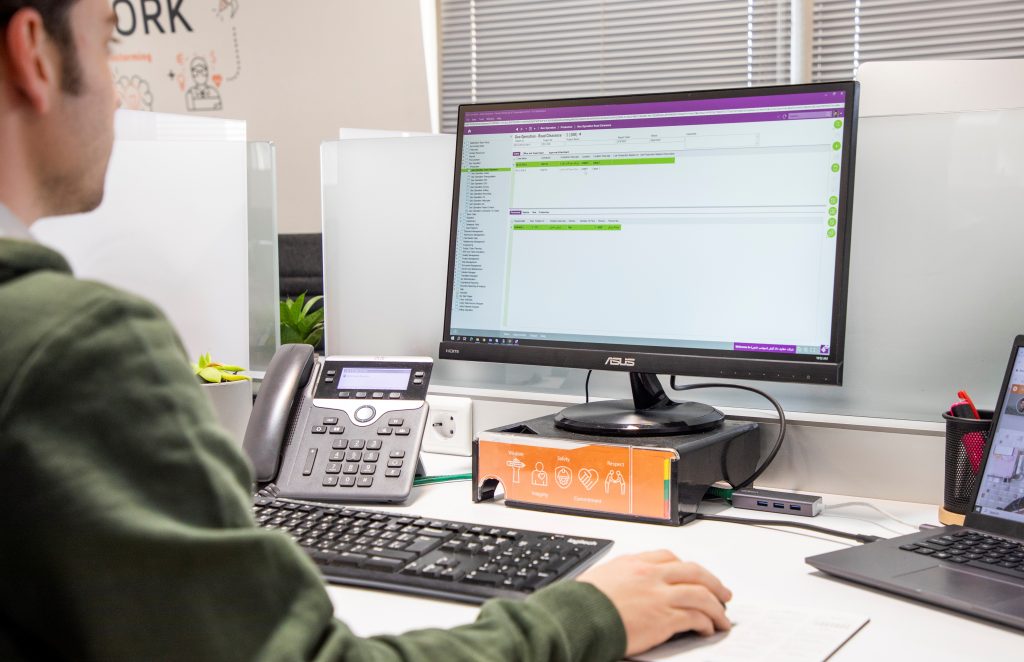Seismic operations play a critical role in oil and gas exploration, providing valuable subsurface information that helps identify potential hydrocarbon reservoirs and guide drilling activities. The process involves the use of seismic waves to create detailed images of the Earth’s subsurface, allowing geoscientists to analyze the geological structures and identify areas with the potential for oil and gas accumulation.
Seismic operations project management within an Enterprise Resource Planning (ERP) system involves the customization and integration of ERP modules to effectively plan, execute, and monitor seismic projects in the oil and gas industry. Here are key aspects and features that can be incorporated into ERP for seismic project management:
- Project Planning and Scheduling
- Resource Allocation: Assigning personnel, equipment, and other resources to seismic projects based on their availability and expertise.
- Timeline Management: Creating project timelines, milestones, and critical paths to ensure efficient project execution.
- Budgeting: Developing project budgets, including costs associated with equipment, personnel, data acquisition, and processing.
- Supply Chain Management
- Equipment Procurement: Integrating with supply chain modules to manage the procurement of seismic equipment, ensuring timely availability for projects.
- Inventory Control: Tracking and managing inventory of seismic equipment and materials required for operations.
- Data Integration
- Seismic Data Management: Developing interfaces to integrate seismic data from field operations into the ERP system for centralized data storage and accessibility.
- GIS Integration: Integrating Geographic Information System (GIS) data for spatial analysis and mapping related to seismic projects.
- Financial Management
- Cost Tracking: Monitoring and tracking project costs in real-time, including expenses related to field operations, data processing, and analysis.
- Invoicing: Automating the invoicing process for clients based on project progress and deliverables.
- Risk Management
- Risk Assessment: Identifying and assessing potential risks associated with seismic projects, such as weather conditions, equipment failures, or data quality issues.
- Mitigation Strategies: Implementing strategies to mitigate identified risks and ensure project success.
- Collaboration and Communication
- Project Collaboration Tools: Integrating collaboration tools to facilitate communication and information sharing among project teams, both in the field and office.
- Document Management: Centralizing project-related documents, reports, and communications within the ERP system for easy access and retrieval.
- Regulatory Compliance
- Compliance Tracking: Monitoring and ensuring compliance with industry regulations and environmental standards applicable to seismic operations.
- Reporting: Generating regulatory reports as required by authorities and stakeholders.
- Analytics and Reporting
- Project Performance Metrics: Implementing analytics tools to track key performance indicators (KPIs) related to project progress, budget adherence, and data quality.
- Customizable Reports: Creating customizable reports for different stakeholders, including management, clients, and regulatory bodies.
- Mobile Accessibility
- Field Operations Support: Developing mobile applications or interfaces to support field personnel in capturing real-time data, submitting reports, and accessing project information on-site.
- Integration with Geophysical Software
- Seamless Integration: Ensuring integration with specialized geophysical software used for seismic data acquisition, processing, and interpretation.
- Project Monitoring and Control
- Real-time Monitoring: Implementing real-time monitoring of project activities to identify issues early and make informed decisions.
- Change Management: Managing changes in project scope, schedule, or budget effectively.
Customizing an ERP system for seismic project management requires collaboration between IT professionals, Business Process experts, project managers, geoscientists, and other stakeholders to ensure that the system aligns with the unique requirements of seismic operations in the oil and gas industry. Regular updates and adjustments may be necessary to accommodate evolving project needs and industry standards.
The implementation and integration of live data from seismic operations with other ERP modules was planned for years at Danaenergy, which was finally made available to end users with the extensive efforts of the Business Excellence (BE) team, the Danasystem software team, and the Geophysics business unit.
The project was successfully carried out with an agile approach aimed at continuous stakeholder participation by creating value in regular iterations and PI’s in the SAFe framework. The required management dashboards will be created in the next phases to help make more optimal decisions.
Babak Zendehdel
Business Excellence Manager

We Answer Your Questions